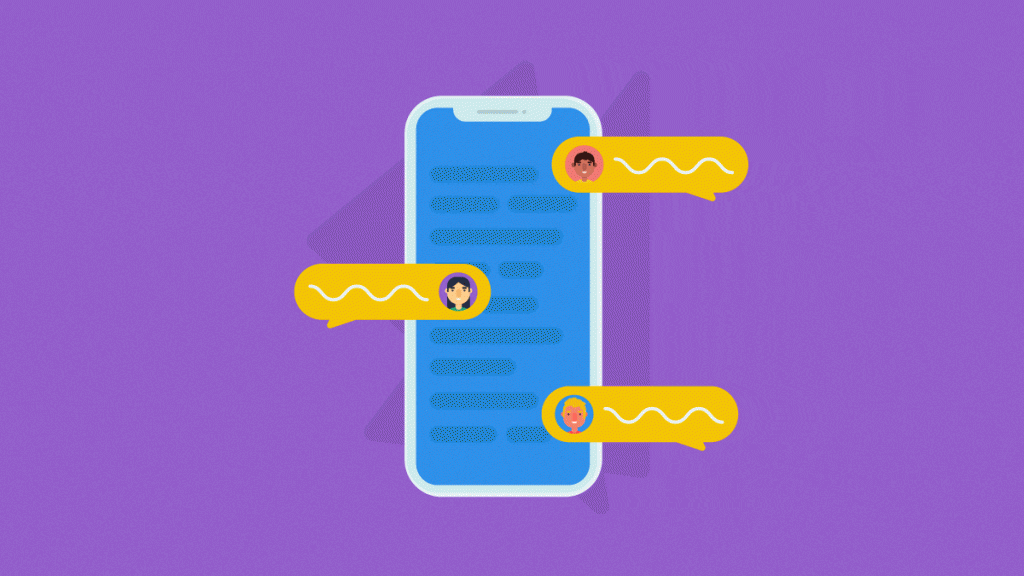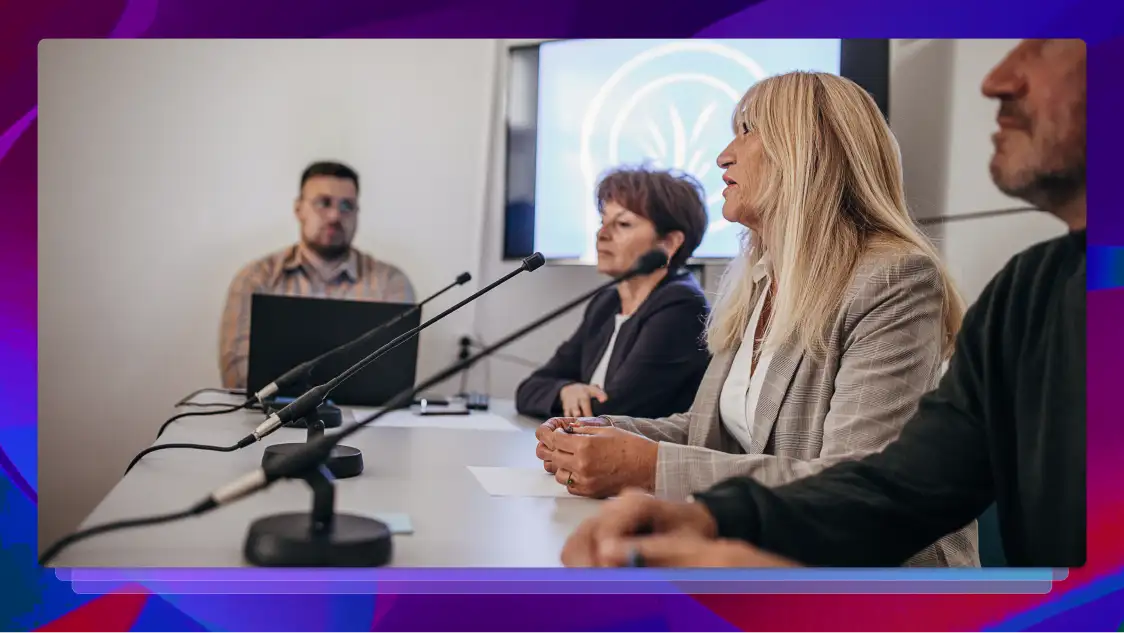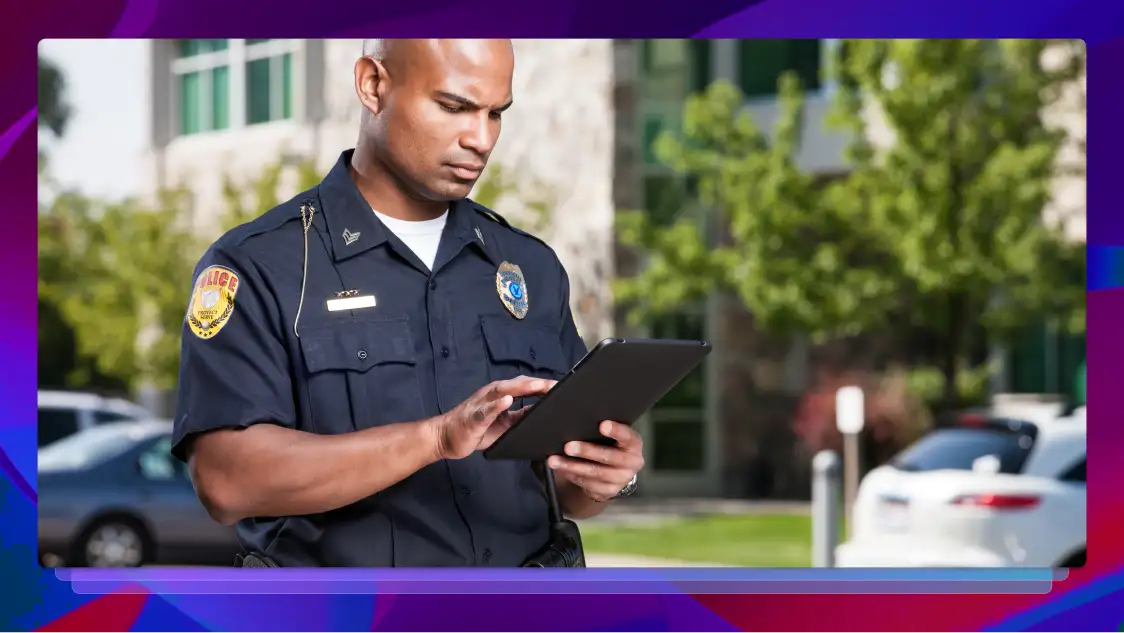How to Save Time in the Workplace with Automatic Transcription
Automatic transcription software can save your business valuable time. Learn how Rev's transcription services help you record live events.

Taking accurate notes during important meetings, interviews, and conferences can be tricky. On one hand, you’re trying to stay present, respond appropriately and ask thoughtful questions. On the other, you’re also taking notes so the conversations can be recalled later for office briefs, blogs posts, legal documents and more.
Wouldn’t it be much easier to be able to participate during interviews and meetings without worrying about taking notes? Automatic transcription provides an easy solution for keeping a record of meeting and interview notes, so you don’t have to choose between participating and writing things down.
Download Rev Voice Recorder App
Automatic transcription software takes the words spoken during a meeting and turns them into a clean, digitized document that’s much more legible and accurate than hastily scribbled notes. Not convinced it’s worth the extra cost? Read on to learn how automatic transcription can help you to gather ideas and important information and how much time transcription could save you in a range of scenarios.
Automatic transcription takes the words spoken during a meeting and turns it into a clean, digitized document that’s much more legible and accurate than hasty scribbles on a notepad.
How fast is transcription?
While manual transcription can take a long time, using services like Rev’s transcription service gives you fast and accurate transcripts ready for use.
As long as you have a clear audio file with minimal background noise, automatic transcription softwares can help you save time by producing a quick transcription of your audio or video file. Transcription services often use professionals to create their transcripts, meaning the work is done quickly and accurately.
How to transcribe conference calls
Conferences are a fantastic place to take in knowledge about your industry, new and upcoming tech, or even information on improving business standards. When your company invests in sending you to a conference, you want to get everything you can out of the presentations and panels while you’re there, as well as having something to reference when you get back. You’ll also want to be able to share your learnings with other members of your team.
While you can’t write down everything you learn, you can record it using your phone using a simple voice recorder app. When you get back to the hotel room or the office, you can then upload the recording for automatic transcription and transform the audio into blog posts, newsletters, briefs and more.
Since clear audio equals accurate transcripts, here are some tips for getting clear audio recordings during conferences:
- Make sure you have your voice recorder app ready to go
- Sit as close to the stage as you can, or sit near a sound speaker to get the clearest recording
- Keep your phone’s microphone facing the speaker and turned away from your body, so it doesn’t pick up your breathing, the sound of rustling clothing or fidgeting
How to transcribe an interview
When it comes to conducting interviews, be they for new staff, research sessions or legal reasons, keeping a record of what is said can be very helpful to refer to later. Using a quick transcription service also means that you’ll be able to refer back to the information as soon as possible without having to wait for a lengthy manual transcription.
When recording interviews so that they can be turned into text, there are some good practices to follow:
- Always inform the interviewee that you are going to record them before you hit the record button. Many states have laws about recording phone calls or in-person interviews without a person’s knowledge, so it’s best to get their consent before you start
Always inform the applicant that you are going to record them before you hit the record button.
- Whenever you’re going to start recording, always say, “This is [your name], and I am talking to [the interviewee’s name]. Do I have permission to record this interview?” Be sure to record the agreement as well
- Place the recording device between you and the interviewee on the desk or table so that it can pick up both voices clearly
- Try to avoid touching the device, rustling papers near it or tapping the table to get the best sound recording
If you’re wondering how to transcribe group interviews, just follow the steps above and make sure you have everyone’s consent before you start. You can also ask everyone in the room to stay as quiet as possible when they are not speaking to ensure you get a high-quality recording.
How to transcribe meetings
Like with interviews, taking copious notes during a meeting can be incredibly tedious and distract you from engaging fully. Rather than furiously writing, using automatic transcription software and services will help you create clear, actionable notes that don’t miss a single talking point or rebuttal. Plus, if there are any questionable outcomes, the notes can very helpful for deciding any next steps or settling disputes.
Rather than notes, use recordings that can later be transcribed with a meeting transcription app to create clear, actionable notes based on a conversation.
To make the best recordings during a meeting, be sure to announce at the beginning that it is being recorded. Not only does this make people aware that they are being recorded, but it will also help to keep attendees more mindful of what they say, which is a win-win when time is of the essence.
Holding virtual meetings? Read our blog on how to transcribe zoom meetings to make sure you’re getting the most out of your online meetings.
Now that you have some ideas on using automatic transcription to benefit your business, you’ll need a good service to transcribe your recordings from voice to text. We’ve got you covered. Learn more about our automated transcription services here.
Subscribe to The Rev Blog
Sign up to get Rev content delivered straight to your inbox.



